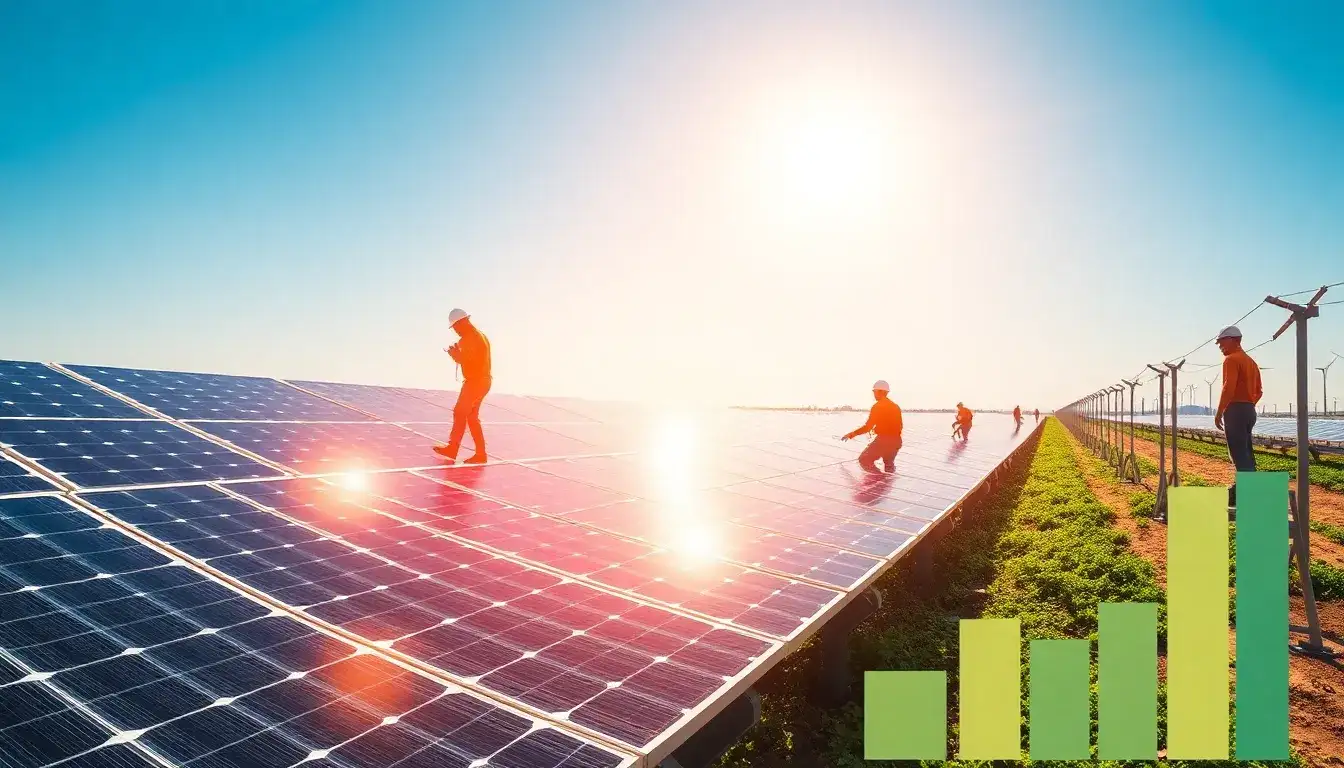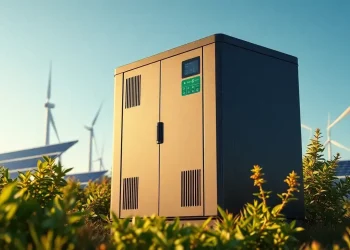
Is the Photovoltaic Industry Experiencing a Turnaround?
In 2025, the photovoltaic (PV) industry is witnessing a surge in installations driven by policy changes, leading to a continuous increase in component prices, alongside a revival in the prices of silicon wafers and solar cells. The new regulations mandate that post-“531” projects will have their tariffs determined by the market, prompting companies to rush installations to secure price advantages. While industry self-regulation is helping to alleviate overcapacity, high inventory levels of silicon are hindering price transmission. The short-term spike in demand is boosting revenues, but the long-term sustainability of this trend remains questionable, with risks of cooling similar to the post-installation drop seen in 2016.
- Policy Changes Driving Installation Surge: The “430” and “531” regulations compel companies to rush installations to secure favorable tariff qualifications for existing projects.
- Component Prices Soaring: TOPCon components have seen a price increase of 0.06 yuan per watt in just two weeks, with spot prices surpassing 0.8 yuan/W, marking a 30-month high.
- Effective Industry Self-Regulation: Production controls are easing the intense price competition, with silicon wafer prices rising over 20% since the beginning of the year, revealing a supply-demand gap.
- Spreading Effects of the Installation Surge: Leading companies have extended order schedules to 15 days, with some component models completely out of stock.
- Challenges from Silicon Inventory: Price increases in downstream sectors are not effectively reaching the silicon segment, as companies prioritize price stability and inventory reduction.
- Uncertainty About Short-term Recovery: The effects of policy stimuli may be short-lived, with demand growth in the latter half of the year being a critical factor.
2025 appears to be an early spring for the photovoltaic industry. Who would have thought that shortly after major solar companies reported significant losses for 2024, price hikes would become the hottest topic in the PV market? In an unexpected turn amidst overcapacity, production quotas for silicon wafers and components are being raised. Recent reports indicate that major companies in the solar silicon and component sectors have convened to adjust the quotas for the first half of the year, with increases of 1% to 3% per quarter.
Since prices began to decline from their peak in the fourth quarter of 2022, photovoltaic product prices have been in a downward trend for over two years. However, following the Lunar New Year in 2025, as various segments of the solar industry resume operations, prices for polysilicon, wafers, solar cells, and components have stabilized and even entered an upward trend. Among these, components have become particularly notable.
Goldman Sachs recently reported that in February, China experienced its first price increase for photovoltaic components in 30 months (+0.4%). They also forecast that the price rebound across the entire value chain could strengthen further in March. For industry practitioners, terms like “sharp increases,” “contract cancellations,” and “stock shortages” have become the norm since March. Reports suggest that top companies such as Trina, Tongwei, and Canadian Solar have seen significant depletion of stock for popular component models, with production lines operating on an “as produced, as shipped” basis, leading to an extended delivery period of 5 to 7 days, now averaging around 15 days.
One photovoltaic sales representative remarked, “The prices are rising so rapidly that they change daily. I have to check the current price every time someone asks.” According to InfoLink, as of March 12, the average price for TOPCon bifacial double-glass components reached 0.73 yuan/W, a 1.4% increase compared to the previous week. Prices for distributed projects are still climbing, with transactions beginning to occur at 0.74 to 0.75 yuan, and manufacturers are even considering raising prices to 0.8 yuan. On March 14, SMM reported that prices for three distributed TOPCon component models rose by 0.015 yuan, with averages reaching 0.748 yuan/W, 0.763 yuan/W, and 0.763 yuan/W, all marking recent highs. In just half a month, component prices have surged by 0.06 yuan/W.
The current price hikes in the photovoltaic sector are largely a result of the installation surge prompted by new policies. On February 9, the National Development and Reform Commission and the National Energy Administration jointly issued the notice on deepening the market-oriented reform of electricity prices for renewable energy, stating that the electricity generated by projects like solar and wind must primarily enter the power market, with prices determined through market transactions. This policy, referred to as the “531” threshold, distinguishes between existing and new projects from June 1, 2025, indicating that post-“531” projects will have their electricity prices determined via competitive bidding.
Furthermore, on January 23, the National Energy Administration issued the management measures for the development and construction of distributed solar power, clarifying the consumption modes for various distributed solar projects. Following the “430” timeline, projects initiated afterward must choose between self-consumption or partial grid connection, and cannot sell all power at fixed prices.
The combination of these two key policy timelines has directly led to the emergence of the installation surge in distributed projects in the first half of this year. Industry stakeholders are keen to lock in “existing project” qualifications by rapidly installing new capacity to benefit from price differentials. This rush has also contributed to the rebound in component prices, dispelling the gloomy trend of continuous price declines.
Since the Lunar New Year in 2025, component prices for photovoltaic systems have started to rise significantly, with increases lasting nearly a month. Leading companies like LONGi Green Energy, Trina Solar, and JA Solar have confirmed price hikes concentrated in the range of 0.02 yuan/W to 0.05 yuan/W. A prominent component manufacturer noted that recent orders for distributed components are primarily priced above 0.75 yuan/W, with some orders exceeding 0.8 yuan/W. A representative from LONGi Green Energy stated that the current average component price is above 0.8 yuan/W. Aiko Solar also confirmed that their BC component pricing has surpassed 0.8 yuan/W, indicating room for further price increases under the installation surge expectations.
In regions with guaranteed high electricity prices, component quotes tend to be slightly higher, with some nearing 0.9 yuan/W. The recent continuous price increases in photovoltaic products are attributed not only to the strong demand from the installation surge but also to the visible effects of industry self-regulation combating “cutthroat competition” and overcapacity issues. Since October of last year, industry self-regulation efforts have been ongoing to address these challenges. Thanks to the collaborative efforts of the government, industry associations, and leading companies, the overcapacity issue in the photovoltaic sector has improved, and cutthroat price competition has been curtailed. As a result, silicon wafers have seen a significant improvement in supply-demand conditions, leading to early price increases and a strong start to 2025.
According to InfoLink’s January 8 statistics, prices for various categories of N-type silicon wafers surged by over 10% compared to the end of December, with the price continuing to rise for 182*210mm N-type wafers into the following week, with increases surpassing 20% at the year’s start. The installation surge has created a supply gap for silicon wafers. As per the latest InfoLink pricing data, the prices for 183N wafers are at 1.2 yuan each, 210RN at 1.4 yuan each, and 210N at 1.55 yuan each, showing upward adjustments across the board effective March 13.
The price increases for battery cells have also been encouraging this year. In February, spurred by new policies, prices began to show upward momentum. According to InfoLink’s latest price data from March 12, prices for N-type battery cells increased across the board last week: M10, G12R, and G12 battery cells averaged 0.295, 0.32, and 0.30 yuan/W, respectively, with increases of 0.005, 0.02, and 0.005 yuan/W. As per InfoLink Consulting’s outlook for March, with policy factors driving terminal demand, the rising prices of downstream components, along with adjustments in silicon wafer prices, will collectively push up the overall prices of battery cells. Overall, battery cell prices are expected to continue rising in March, but specific trends will depend on the supply-demand situation for various sizes.
For the silicon production segment, which has the longest cycle and the most significant price fluctuations, polysilicon manufacturers are beginning a new round of contracting. In light of rising prices downstream, polysilicon companies are also contemplating upward price adjustments, with some high-priced dense material orders being completed. Prices for dense materials have increased compared to the end of last year, and prices for granular silicon have also risen. With expectations for a surge in terminal installations, and as component and battery cell prices increase, there is anticipation for rising silicon prices as well. However, the challenge remains that both upstream and downstream sectors have high inventory levels. Thus, the silicon industry association indicates that due to the substantial inventory of polysilicon, the transmission of this round of price increases to the silicon segment is difficult, and companies are currently more focused on maintaining price stability and reducing inventory.
In response to the sudden surge in installations, various segments of the photovoltaic supply chain are urgently ramping up production rates to meet order demand. According to the latest production data from Guojin Securities, the output of the polysilicon segment is expected to rise to about 108,000 tons in March 2025, reflecting a month-on-month increase of 7.3%. The production of silicon wafers, battery cells, and components is also expected to see rapid growth.
However, the sustained rise in industry prices driven by policy changes may not be long-term. Industry insiders caution that the price increases are largely due to a temporary surge in installations, heavily influenced by policy changes. Whether these prices will continue to rise depends on the market growth in the latter half of the year; otherwise, the price increases may not be sustainable. Reflecting on the past, the last surge in installations led to a hot market in the first half of 2016, followed by a sudden cooling in the second half. Following the “630” deadline in 2016, prices across the entire industry chain plummeted dramatically, leading to a rapid decline in installation enthusiasm, significant profit reductions for companies, and exacerbated overcapacity issues.
Indeed, the price increases driven by the installation surge can provide a direct boost to companies’ revenue. The China Photovoltaic Industry Association estimates that China’s component production in 2024 will reach 588 GW; based on this figure, with an average price increase of 0.04 yuan/W, the entire industry could see an additional revenue of approximately 23.5 billion yuan. However, industry participants are also cautiously assessing the implications of this installation surge on pricing. One insider humorously remarked, “The installation surge is like adding fuel to the fire during a snowstorm; how long that fire will burn is anyone’s guess.” Others in the photovoltaic sector question, “Once the installation surge ends, will the newly expanded capacity and inventories turn into a burden in the post-installation era?” Ultimately, whether prices in the industry chain can continue to rise depends on improvements in supply and demand. “Recently, the industry’s price recovery has been limited, primarily reflecting a simple recovery from a state of supply-demand imbalance and losses. Coupled with policy changes, there may be installation-related impacts in the coming two to three months,” said LONGi Green Energy’s President Li Zhenguo during a recent interview with media outlets.







